TREETREE
LONDON PLANE TREES
HIGHBURY FIELDS TREES
NATIVE TREES
NON-NATIVE TREES
TREE POLICY
TREE CARE
MISSING TREES
Example losses
Fieldway Crescent Lime
Thornhill Square Ash
Highbury Fields horse chestnuts
Network Rail axes trees
TREES & BUILDINGS
TREES IN OLD BUILDINGS
BOOKS & DOCUMENTS
LINKS & CONTACT
NEWS
TreetreeTREE
Horse chestnut branches fall
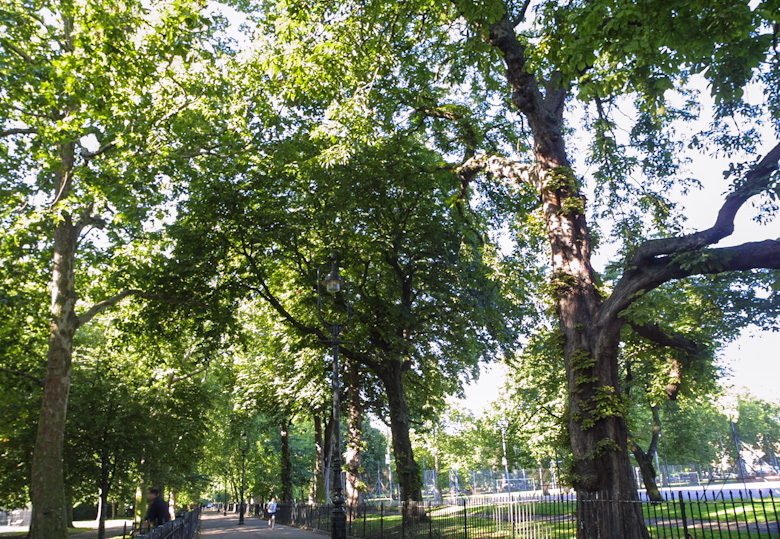
Five of the line of seven horse chestnuts along Church Path, Highbury Fields, in August 2007. The tree on the right can be seen in the right hand photo below.
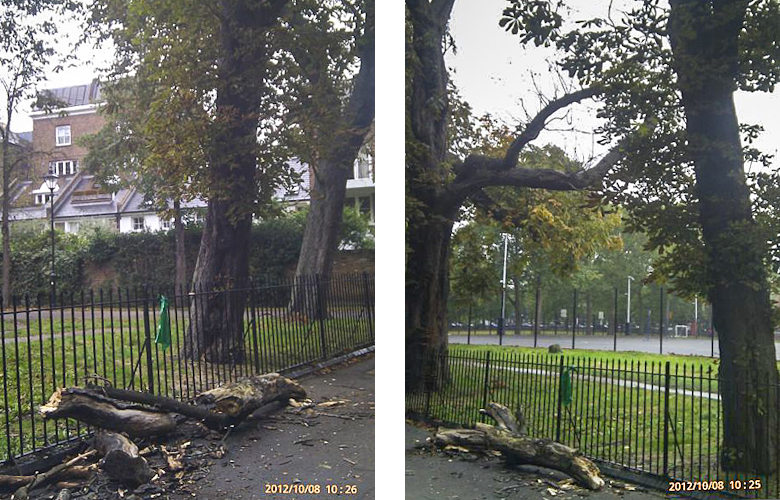
October 8th, 2012. A major branch lying on Church Path after its collapse. The two trees either side of the fallen branch had been in decline for several years. Photos courtesy of Islington Tree Service.
At the beginning of October, 2012, a massive branch of a horse chestnut at Highbury Fields collapsed. Two trees in the line of seven mature horse chestnuts had been ailing for several years and they had been reduced in size periodically for safety's sake. They have now been reduced to mere trunks that will cause no damage while decisions are taken on how to treat them: removal, replanting or leaving them for some years as habitat for invertibrates – beetles and the like.
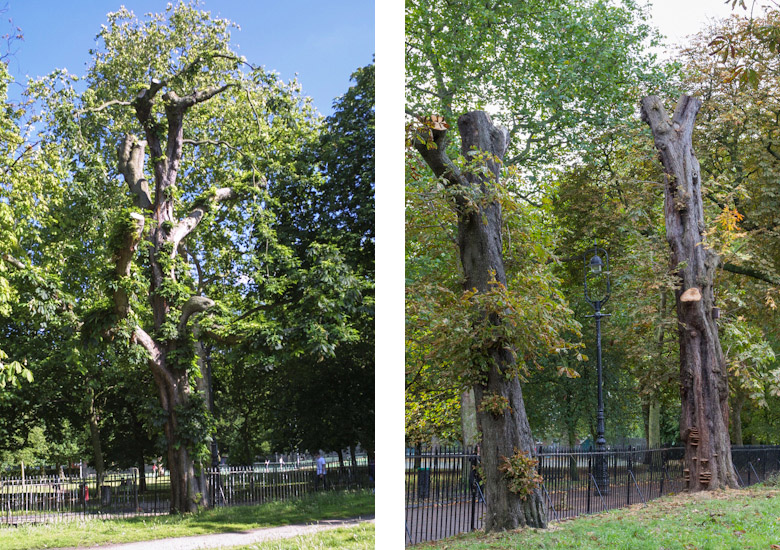
By 2008 the two trees had already been much reduced in size, left, and in October 2012 they have become tall, forlorn stumps.
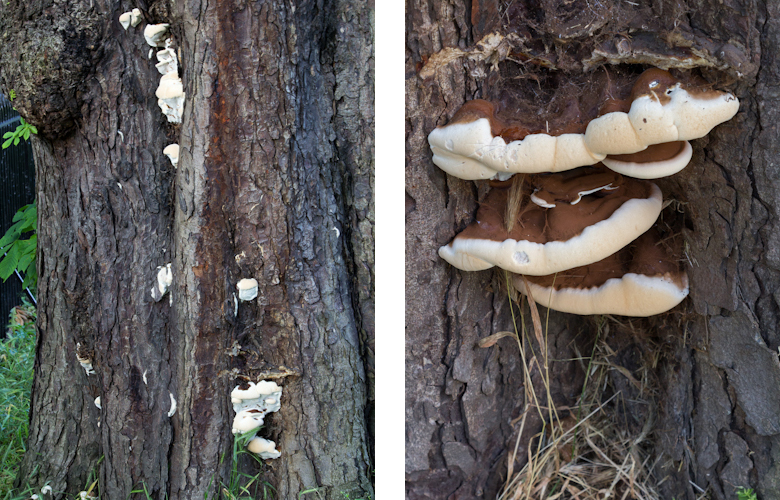
Both trees were showing fungal attack. These photographs show fungal development on one of the trees from mid-June to early July, 2012. Also showing in the left-hand photo is a rust coloured streak, the evidence of a bleeding canker that has become an increasingly common assailant of the species. It has a strong tendency to lead to the death of the tree over several tears. The canker was well-established before the emergence of the fungus.
The remaining five horse chestnuts in the row do not seem to be affected by the disease. Unfortunately, several of the group of younger trees in the Orchard area on the other side of the path are showing signs of canker getting a hold.
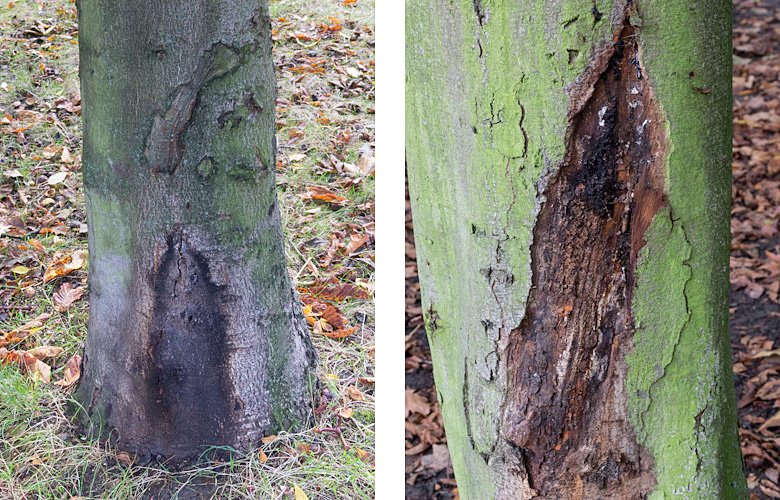
Two or possibly more of the immature horse chestnuts in the Orchard are showing signs of disease which may mean they do not become part of the next generation of mature horse chestnuts on Highbury Fields.
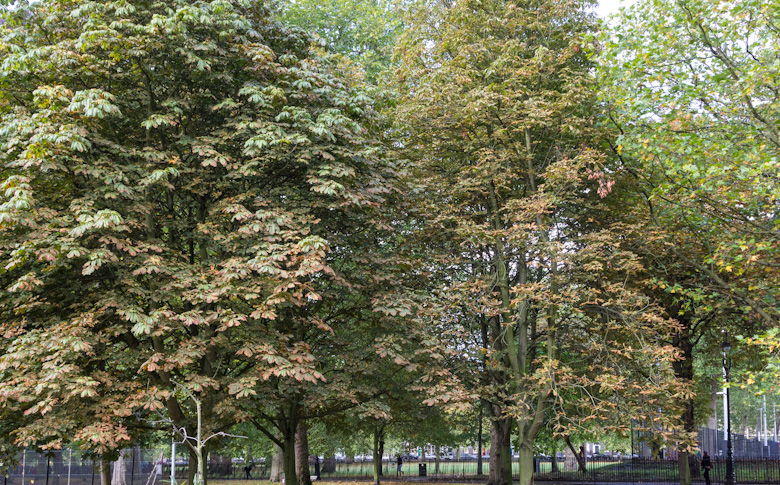
One of the effects of the camker is often a thinning of the crown of the tree, as seen in the horse chestnut on the right of the photograph. The browning of the leaves is a result of the pest Cameraria ohridella, the horse chestnut leaf miner, a moth whose caterpillars eat the flesh between the two surfaces of the leaves.
Bleeding canker of this species has increased dramatically in recent years. The Daily Mail reported the case of Barrington Court, Illminster, Somerset, where the National Trust had to fell an avenue of 68 horse chestnuts in 2011. They had been growing for nearly a century. See the Daily Mail article. Apparently, half the country's horse chestnuts are affected by the disease.
More information on bleeding canker problems is available on the Forestry Commission’s website page
Horse Chestnut Bleeding Canker,
and in
![]() Bleeding Canker Questions and Answers,
Bleeding Canker Questions and Answers,
and see this page the Forestry Commission’s details of the Horse chestnut leaf miner.